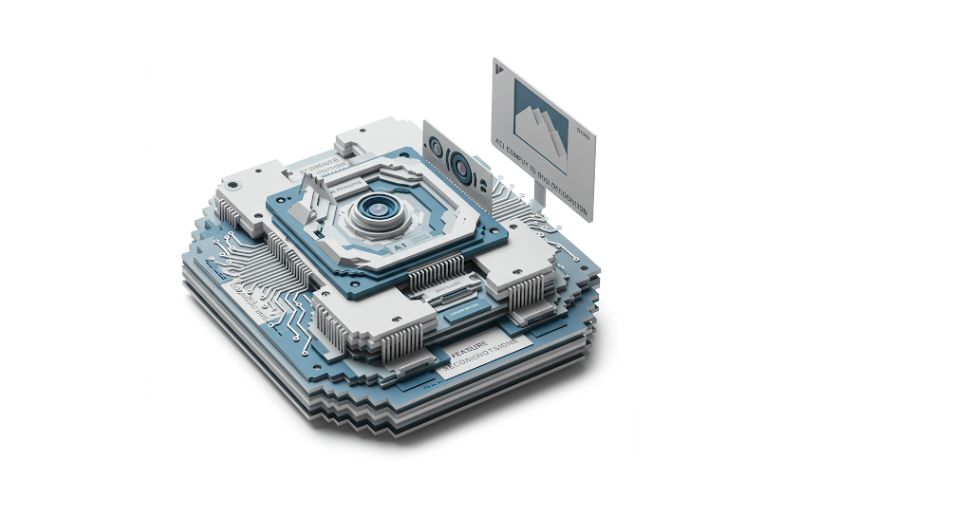
Apr 26, 2025

The recent publication of Metastat Insight draws attention to the nuanced progression and technological infusion within the Global AI in Computer Vision Market, a transformation capturing a shift in the manifestation of machines- viewing and interacting with visual information. Artificial intelligence has come out of the abstract computing paradigms into technologies that redefine how it is perceived by systems. The computer vision-AI integration is perhaps the most significant instance of this trend, wherein visual data is captured for comprehension, contextualization, and action-taking. This bridge has since been quietly transforming how industries manipulate visual input, allowing machines to perform at levels of perception heretofore thought achievable solely through human cognition.
Global AI in Computer Vision market is estimated to reach $23,433.30 million in 2025 with a CAGR of 22.0% from 2025 to 2032.
The evolution of this market is driven not only by technological development but also by its actual deployment across a very broad area of sectors. In industries where matters of safety, speed, and accuracy are considered, AI-driven computer vision tools enable machines to recognize patterns, detect deviations, and compete with human judgment in decision-making, in terms of consistency. Practically, from finding defects on production lines to understanding traffic on congested roads, this integration affords industry actionable data-driven outcomes. As the demand increases for speed without compromising quality, companies gradually start accepting these solutions as reliable extensions of their operational paradigms.
Apart from their industrial plants and major infrastructures, applications of AI-enhanced computer vision have made significant strides in consumer technology. Accessibility-based day-to-day user experiences, for example, unlocking a phone using facial recognition or curating image collections based on content rather than tags, really benefited from years of discoveries in this area. While it may appear straightforward for the final user, this functionality is a result of numerous interactions between a visual processing unit and machine learning models trained to discriminate small differences in light, shape, texture, and motion. AI's sound work behind the interface attests to how much it has slithered into the 'seamless' landscape of everyday life.
To translate this view into figures would not at all be able to capture the depth of change that has ensued within the Global AI in Computer Vision Market. It signifies a qualitative shift in how visual data is perceived. The tradition was static or manual interpretation. The transition has been to dynamic systems adapting to usage with each iteration. Each image processed through the AI-driven model rewires the model to better interpret similar images in the future. Nurtured by such continuous refinement, these systems can adapt to not only very different environments but also evolving user behavior, regulatory climates, and technology ecosystems.
Interestingly, this transition is not much expressed in the change in data prioritizing and storage. For one, visual information is inherently dense and diverse. In teaching machines to prioritize certain elements from others, let us say the angle of a shadow or the presence of an anomaly in a texture; a kind of visual hierarchy starts to form. Such judgments-born of a thousand cycles of training and increasingly refined algorithms-replicate, in certain respects, human cognitive biases while being more consistent than they are. Not reproduce human sight but parallel construct drawn selectively from it is the effect.
Such capacities, however, have serious consequences for hardware. This essentially means that devices and sensors have to ramp up faster processing speeds, higher resolution inputs, and consistent data throughput soon, in accordance with AI's requirements for interpreting an input. This has piqued the interest of the development of hardware and software in this market towards further integration. Rather than regarding components as separate tools, however, there is quite a concerted effort towards constructing cohesive systems that allow every part-lens, processor, algorithm-to work in synchrony. They have, therefore, nurtured performance because this shift sees one evaluating performance not just on the quality of components but also on how well the entire system interprets and responds to visual stimuli.
In highly specialized markets, such as aerospace or advanced healthcare diagnostics, these technologies are establishing new thresholds in performance. The ability to analyze images with sub-millimeter precision or detect very small changes over several frames in real time has pushed the application of AI into computer vision beyond efficiency to include other-spurious-but important realms such as discovery and safety assurance and complex diagnostics, all of which open doors to areas inaccessible by traditional methodologies. Across all applications, however, the common theme running through them is how to convert visual data into usable knowledge, which forms the very basis for the growth of this sector.
From the latest findings as documented in their Global AI in Computer Vision Market Report released by Metastat Insight, it turns out that this market has all indicators of continuous refinements and adaptations, not rapid flows. The application of AI on visual data processing has imperceptibly modified the way industries, devices, and people appropriate their environments. With hardware and algorithmic architecture evolving into newer generations, this market still penetrates life and industrial activities deeper. Thus, movements in the direction of any future development for the sector will not be sudden changes marked out but rather through quiet, continuous reinforcement of visual intelligence's role in shaping the ecosystems of technology today.
Drop us an email at:
Call us on:
+1 214 613 5758
+91 73850 57479